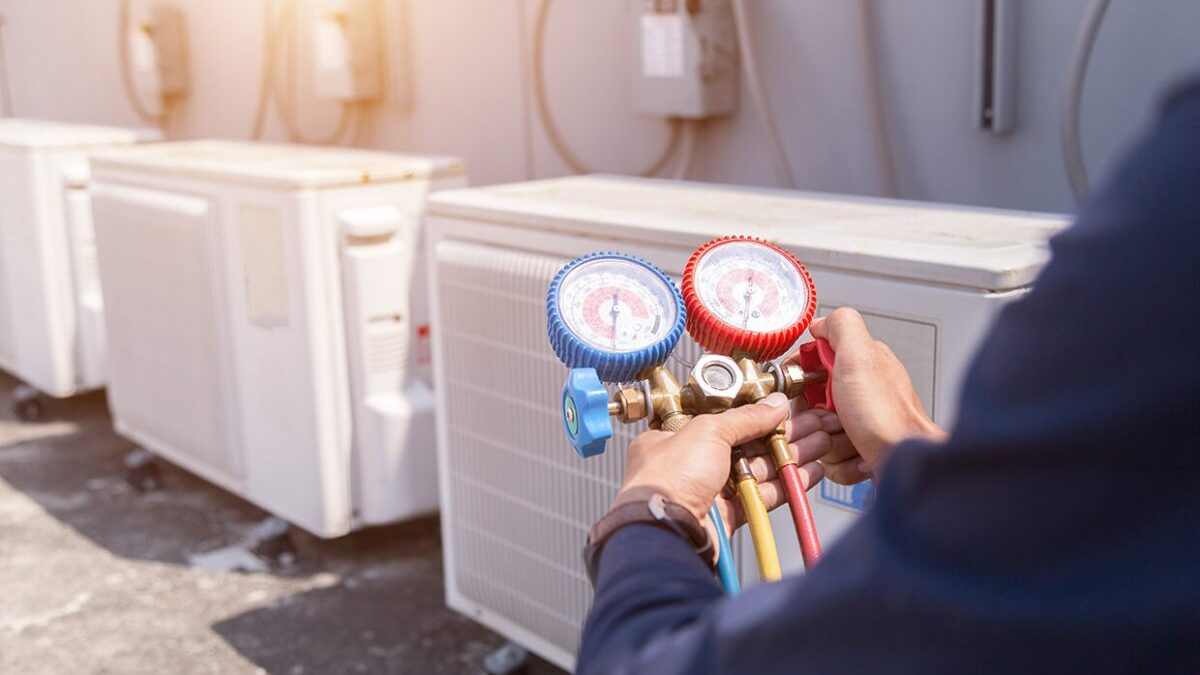Heating, Ventilation, and Air Conditioning (HVAC) is important in any building. Most homes have some form of heating systems to provide warmth in the colder months. Air conditioning and air handling are also becoming more of a feature in residential buildings in the United Kingdom in recent years.
When it comes to commercial buildings, HVAC is something that is usually designed into new buildings. This is usually to maintain environmental conditions within the building, which is essential to ensure the property stays in good condition over time. Without proper HVAC, commercial spaces may develop issues with damp, mould, moisture and other problems that can cause problems with buildings over time. It is also worth noting that proper HVAC systems can also provide safety benefits by helping reduce the spread of fires and pathogens (more on this later).
In addition to preventing issues with the construction of the property, HVAC systems also provide a comfortable and safe indoor environment for people who use the space. This is vital in retail units, office buildings, and pretty much any commercial space that has people coming and going. It’s not just people either, many businesses require commercial HVAC and refrigeration solutions to keep their products safe and sound. For example, a supermarket may have chilled aisles and refrigeration units/chillers to keep foodstuffs from spoiling. They will also have some form of heating and air conditioning in place to keep customers comfortable too. This sort of setup can require complex and multifaceted HVAC solutions.
So What About Air Quality?
HVAC systems are pretty important when it comes to protecting people inside commercial premises. As mentioned, they can play a role in preventing the spread of fire if there happens to be an event. However, not many people are aware of the part ventilation systems play in helping to maintain proper air quality inside buildings. They do this by circulating fresh air from outside and generally circulating air throughout spaces.
Of course, not all HVAC systems perform the same functions as standard. However, it is possible for commercial solutions to remove pollutants and particulates from air with filters and purification infrastructure. One of the issues that was highlighted by the COVID 19 pandemic was how important fresh air is to keeping people safe from the spread of the virus. So air filtration and treatment with UV lights and air purifiers was essential to reducing the spread of virus particles in offices, entertainment venues and retail settings.
What Can Be Done To Protect The Population From Poor Air Quality?
A key topic in the United Kingdom at the moment is poor air quality in towns and cities. There are many sources of pollution all around us, but the issues of poor air quality are generally felt more in densely populated areas than they are in rural areas. Things like congested roads and industrial activity are really bad for air quality, with NOx, CO2 and other harmful products like ozone being big issues in towns and cities across the country.
There are pretty consistent trends and data that show a higher rate of cardiovascular illness like asthma in highly urbanised areas. Poor air quality is known to have many negative impacts on health and wellbeing, and can severely impact early childhood development too.. From a public health perspective, the increase in electric vehicle use may go some way to addressing point source air quality issues at the roadside. However, there still need to be solutions to deal with air quality inside buildings, which involves more than just products coming out of exhausts.
There is a growing demand for HVAC solutions for commercial properties across the UK. Modern commercial buildings are being constructed with purpose built solutions, and there are also a lot of old buildings in the UK that would benefit from having modern air handling infrastructure. HVAC systems can be installed in old buildings. However, the process of designing and installing infrastructure can be a lot more complicated because of things like structural limitations, unique architecture and outdated electrical systems. Further, there needs to be space for infrastructure like boilers, filters and ductwork throughout the buildings. Despite these challenges, it is possible to install HVAC systems in older buildings.

